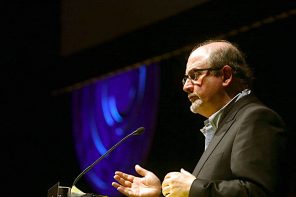Over the last several years the term religious “Nones” has become a major topic of discussion and analysis by those who pay attention to religious trends. Although the term dates back at least to the 1960s, based on its current usage and popularization, it would appear as though it is a completely new designation for a growing segment of the American population—those who are unaffiliated with any religious group.
What has caught everyone’s attention is that there has been a significant and sustained increase in the number of people who are choosing not to identify with any religion. As reported by the Pew Research Center, in 2007, 16 percent of American adults reported no religious preference or affiliation; by 2014 this statistic had increased to almost 23 percent. And younger adults are more likely to say that they have no religion than their parents or grandparents’ generations.
Many church leaders are concerned about their losses and what in their view will result in a general decline in social and personal morals. Others rationalize their losses as essentially a culling of the religious herd. Now, they say, we’re down to people who really believe, instead of “cultural Christians” who don’t adhere to Christian beliefs. Meanwhile, many atheists claim that the entire category is populated by fellow atheists who are somehow reluctant or afraid to publicly proclaim their disbelief.
 These reactions to the increase in the number of people classified as “religious Nones” represent an assumption based on a market approach of religion and an understanding of religion as a binary reality. Just like any other business, success in the religious marketplace is the goal, and it is measured by the number of people who identify with your particular brand of religion (or irreligion as the case may be). Further, individuals are thought of as either being religious (or spiritual) or not; there are no other options. Thus the basic gist of the majority of writing and hand-wringing about the “rise of the Nones” is that secularism is on the rise, and religion and spirituality is in retreat.
These reactions to the increase in the number of people classified as “religious Nones” represent an assumption based on a market approach of religion and an understanding of religion as a binary reality. Just like any other business, success in the religious marketplace is the goal, and it is measured by the number of people who identify with your particular brand of religion (or irreligion as the case may be). Further, individuals are thought of as either being religious (or spiritual) or not; there are no other options. Thus the basic gist of the majority of writing and hand-wringing about the “rise of the Nones” is that secularism is on the rise, and religion and spirituality is in retreat.
In my view, this assumption doesn’t actually capture the diversity of beliefs, non-beliefs and practices within the Nones category. So, what is really going on with religious Nones?
The origins of the term shed some light on who exactly is actually included in the category. Although the category already existed, in 1968 sociologist Glenn M. Vernon published an article titled, “The Religious ‘Nones’: A Neglected Category” that brought the idea of “Nones” forward as an analytic category that religion scholars could, and should, explore. Vernon focused on the response of “none” or “none of the above” to the survey question, “What religion are you?” As it does today, his description of the term included “atheists, agnostics, those with ‘no preference,’ [and] those with no affiliation,” but it also included members of small groups that were not otherwise classified into a larger religious group. He proceeded to analyze the beliefs, experiences and affiliations of people within the Nones category. Vernon then argued that this category needed more analysis and actually suggested an alternative term for Nones (which obviously never caught on): “religious independents.”
More recently, in particular with the 2008 American Religious Identification Survey (ARIS), and the 2012 Pew Research Center report “Nones on the Rise,” this term has become part of the public imagination of the fate of religion in the US. (Indeed some have tracked the origins of the term Nones to the 2012 Pew report, others to ARIS researchers, rather than to its earlier origins.)
Despite all this attention, the Nones category isn’t particularly helpful for understanding what is happening with religion in the U.S., unless the different groups that can be identified within the larger category are disaggregated. Moving beyond simply classifying individuals by their religious or irreligious identity, particularly by listening to how they describe the diverse ways that they think (and act) about religion, we can identify some of the groups within the larger Nones category.
In addition to atheists, agnostics, and those who identify as “nothing in particular,” there are the “spiritual but not religious,” although they would not be found exclusively within the Nones category.
There are others who dismiss the whole idea of being “spiritual but not religious,” but who do religious/spiritual things. They occasionally attend services, pray, believe in Karma and meditate. But they don’t tend to think of these things as having any particular religious or spiritual content.
Focusing on Nones also misses those who are marginally interested in religion, rarely if ever attend services, yet claim that it has some relevance in their lives. Some Nones attend religious services on occasion, are generally open to the idea of the supernatural and believe in God or a higher power, but do not identify themselves as religious or with any particular religious tradition. As one young woman told me when I asked her whether religion had any relevance in her life, “A little bit, maybe 5 percent.”
There are still others who are generally disinterested in religion, are OK with idea of God—whether for themselves or others—but are not inclined to either identify themselves as atheists, agnostics or spiritual but not religious. There are even those who don’t believe in God but who differentiate themselves from atheists. Yes, these people exist, and in general, they distinguish themselves from what they see as the overly strident tone of atheists as well as the preoccupation of atheists to argue that God does not exist—neither practice appeals to these individuals.
Each of these have an important link to a larger perspective that we find, particularly among younger people, that might be thought of as the “It’s All Good” ethic, which tends to stretch across the religious and non-religious alike about many life issues. As applied specifically to religion, there is an acknowledgment that others can believe—or not believe—whatever they want: “It’s all good,” at least so long as nobody gets hurt.
Since the entire category is based on non-affiliation, all those people who may identify with a particular religion but have no involvement with any religious institution are also left out. This would include people who, for example, identify as Jewish, Catholic or generally “Christian,” but who never or rarely attend services, have no spiritual practices, and are otherwise uninvolved in any religious institution, whether church, synagogue, temple, or mosque.
Finally, and perhaps most telling, people that religion scholars (like myself) designate as Nones rarely think of themselves in that way. This in itself isn’t too insightful, since most scholarly categories are at least once-removed from real life. Yet, in this case, I think it illustrates the point: how people understand the role of religion in their lives is often much different than what scholars are able to express through their measures.
Religious Nones is a more complex—and interesting—category than its name implies. Perhaps following Vernon’s 1968 suggestion to call the religiously unaffiliated “religious independents,” we might pursue a better term for this category. Yet even then we are left with a category that implies a particular theoretical and methodological approach to religion that really doesn’t fit what is going on in real world.
Rather than imposing a category that forces a multi-dimensional reality into a dichotomous measure of religious or not, or thinking about religion as a purely numbers game of what group has the most adherents, we might shift our attention to focus on how religion, values, relationships and meaning really operate in the lives of individuals and communities—religious or not.





